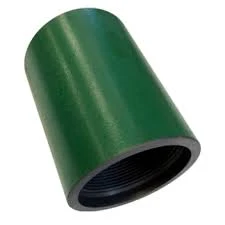- Afrikaans
- Albanian
- Amharic
- Arabic
- Armenian
- Azerbaijani
- Basque
- Belarusian
- Bengali
- Bosnian
- Bulgarian
- Catalan
- Cebuano
- Corsican
- Croatian
- Czech
- Danish
- Dutch
- English
- Esperanto
- Estonian
- Finnish
- French
- Frisian
- Galician
- Georgian
- German
- Greek
- Gujarati
- Haitian Creole
- hausa
- hawaiian
- Hebrew
- Hindi
- Miao
- Hungarian
- Icelandic
- igbo
- Indonesian
- irish
- Italian
- Japanese
- Javanese
- Kannada
- kazakh
- Khmer
- Rwandese
- Korean
- Kurdish
- Kyrgyz
- Lao
- Latin
- Latvian
- Lithuanian
- Luxembourgish
- Macedonian
- Malgashi
- Malay
- Malayalam
- Maltese
- Maori
- Marathi
- Mongolian
- Myanmar
- Nepali
- Norwegian
- Norwegian
- Occitan
- Pashto
- Persian
- Polish
- Portuguese
- Punjabi
- Romanian
- Russian
- Samoan
- Scottish Gaelic
- Serbian
- Sesotho
- Shona
- Sindhi
- Sinhala
- Slovak
- Slovenian
- Somali
- Spanish
- Sundanese
- Swahili
- Swedish
- Tagalog
- Tajik
- Tamil
- Tatar
- Telugu
- Thai
- Turkish
- Turkmen
- Ukrainian
- Urdu
- Uighur
- Uzbek
- Vietnamese
- Welsh
- Bantu
- Yiddish
- Yoruba
- Zulu
Comparison of Bull Plug and Hex Plug Key Differences and Applications in Various Industries
Bull Plug vs. Hex Plug Understanding the Differences and Applications
In the world of plumbing and pipeline systems, choosing the right type of plug can significantly impact the efficiency and reliability of the system. Two popular options are the bull plug and the hex plug. Understanding the differences between these two types of plugs can help professionals and DIY enthusiasts alike make informed decisions.
What is a Bull Plug?
A bull plug is a type of pipe fitting that has a rounded end, designed primarily for blanking off the end of a pipe. Its rounded design allows for a snug fit within the pipe, minimizing the risk of leaks and facilitating ease of installation. Bull plugs are commonly made from materials such as stainless steel, brass, or plastic, and are available in various sizes to meet different pipe diameters.
One of the primary advantages of a bull plug is its ability to create a resilient seal, making it ideal for applications where pressure or temperature fluctuations are a concern. Because of its design, it is usually employed in high-pressure systems, such as water, gas, and hydraulic applications. Additionally, its ease of use means that it is often preferred for quick shutdowns in maintenance situations.
What is a Hex Plug?
On the other hand, a hex plug has a hexagonal shape and is designed to fit into the end of a pipe with threaded connections. This shape allows for easy installation and removal using a wrench, making it a favored option in situations where frequent access to the system is necessary. Hex plugs are also made from materials like stainless steel and brass, and they come in various thread sizes to suit different specifications.
The hex plug is particularly useful in applications where a reliable seal is required but where maintenance and adjustments might be needed over time. Unlike the bull plug, which provides a permanent seal, the hex plug is easier to uninstall and replace without disrupting the entire system. This characteristic makes it a popular choice in mechanical and hydraulic systems, as well as in residential plumbing applications.
bull plug vs hex plug

Key Differences
The fundamental difference between bull plugs and hex plugs lies in their design and functionality. Bull plugs are designed for applications that require a secure, long-term seal without the need for frequent access, while hex plugs are intended for systems where regular adjustments or maintenance might be required.
Additionally, the installation methods differ. Bull plugs typically do not require any tools for installation, making them quicker to use. In contrast, hex plugs require a wrench or similar tool for installation and removal, which adds an extra step in the process.
Choosing the Right Plug for Your Application
When deciding between a bull plug and a hex plug, several factors should be considered. The nature of the application—whether it involves high pressure or needs frequent maintenance—will largely dictate the choice.
If the need is for a permanent seal in a high-pressure environment, the bull plug is likely the best option. Conversely, if ease of access and maintenance is a priority, the hex plug would be more appropriate.
In conclusion, both bull plugs and hex plugs serve essential functions within plumbing and piping systems. Understanding their distinct characteristics and applications ensures that the right choice is made for specific needs, ultimately leading to more efficient and reliable operations.
-
Tubing Pup Joints: Essential Components for Oil and Gas OperationsNewsJul.10,2025
-
Pup Joints: Essential Components for Reliable Drilling OperationsNewsJul.10,2025
-
Pipe Couplings: Connecting Your World EfficientlyNewsJul.10,2025
-
Mastering Oilfield Operations with Quality Tubing and CasingNewsJul.10,2025
-
High-Quality Casing Couplings for Every NeedNewsJul.10,2025
-
Boost Your Drilling Efficiency with Premium Crossover Tools & Seating NipplesNewsJul.10,2025







